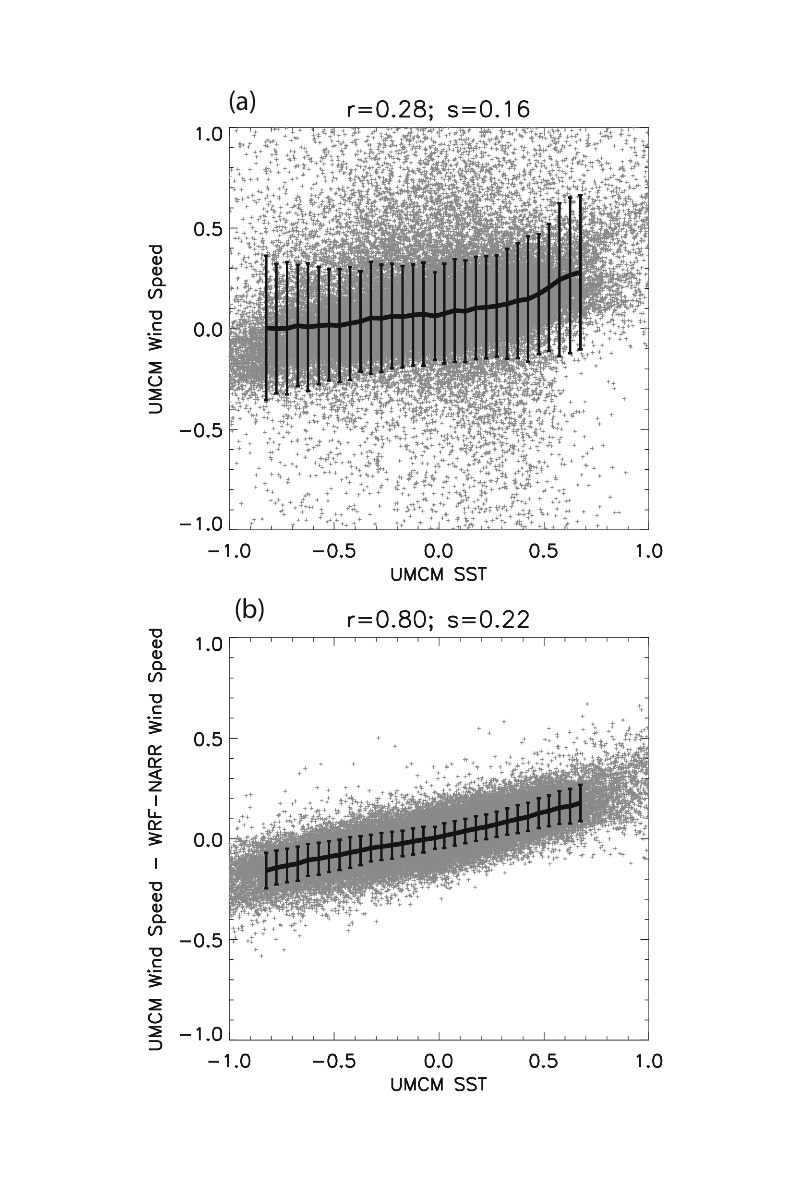
|
||||||||||||||||
|

Regional Climate Dynamics What shapes mesoscale wind anomalies in coast upwelling zones? Simulating and predicting climate variability and changes in coastal areas is particularly complex, due to air-sea interactions and sharp physiographic contrasts. For example, major coastal upwelling zones as the California Current System exhibit complex mesoscale dynamics. In this region, large scale wind during summer is generally equatorward and alongshore, generating coastal upwelling and resulting in a confined ribbon of colder ocean temperature nearshore. Eddies generated by dynamical instabilities of the currents lead to lateral heat transport, so that effects of coastal upwelling on sea surface temperature (SST) can be felt hundreds of km away. Upwelling and the eddies associated with it potentially lead to complex air-sea interaction in coastal upwelling zones by introducing mesoscale structures in SSTs. Indeed, observational studies have shown that such mesoscale variations in SST may induce mesoscale variations in wind. In eastern subtropical upwelling regions such as the California coast, this mechanism could be of great importance for the mean state and variability of the climate system. In coastal regions, orography also creates mesoscale variations in wind, and the orographic effect may extend more than 100 km offshore. The respective roles of SST/wind links and coastal orography in shaping mesoscale wind variations in nearshore regions is not clear. We address this question in the context of the California Upwelling System, using a high-resolution regional numerical modeling system coupling the WRF atmospheric model to the ROMS oceanic model, as well as additional uncoupled experiments to quantify and separate the effects of SST/wind links and coastal orography on mesoscale wind variations. Figure 1a shows the scatter plot between mesoscale SST and wind speed anomalies in the coupled simulation. No strong relationship is found between those two quantities. However, once the effects of orography are removed from mesoscale wind anomalies, the scatter is reduced dramatically and a characteristic linear relation between mesoscale SST and wind anomalies emerges (Figure 1b). This analysis shows that SST/wind links exist over the entire domain, but they are partially masked by the orographic effects near the coastline. After taking into account potential biases in the representation of the strength of SST/wind links by the model, our results suggest that the magnitude of mesoscale wind variations arising from the orographic effects is roughly twice that of wind variations associated with mesoscale SST anomalies. This indicates that even in this region where coastal orography is complex and leaves a strong imprint on coastal winds, the role of SST/wind links in shaping coastal circulation and climate cannot be neglected.
Figure 1. (a) High-pass filtered wind speed (m.s−1) versus high-pass filtered SST (K) in the coupled simulation in summer 2002. (b) As (a) except that orographic effects estimated with an uncoupled WRF experiment have been removed from high-pass filtered wind speed from the coupled simulation. Download the paper (Bo¨¦ et. al. 2010) describing these results in more detail. |
|||||||||||||||

